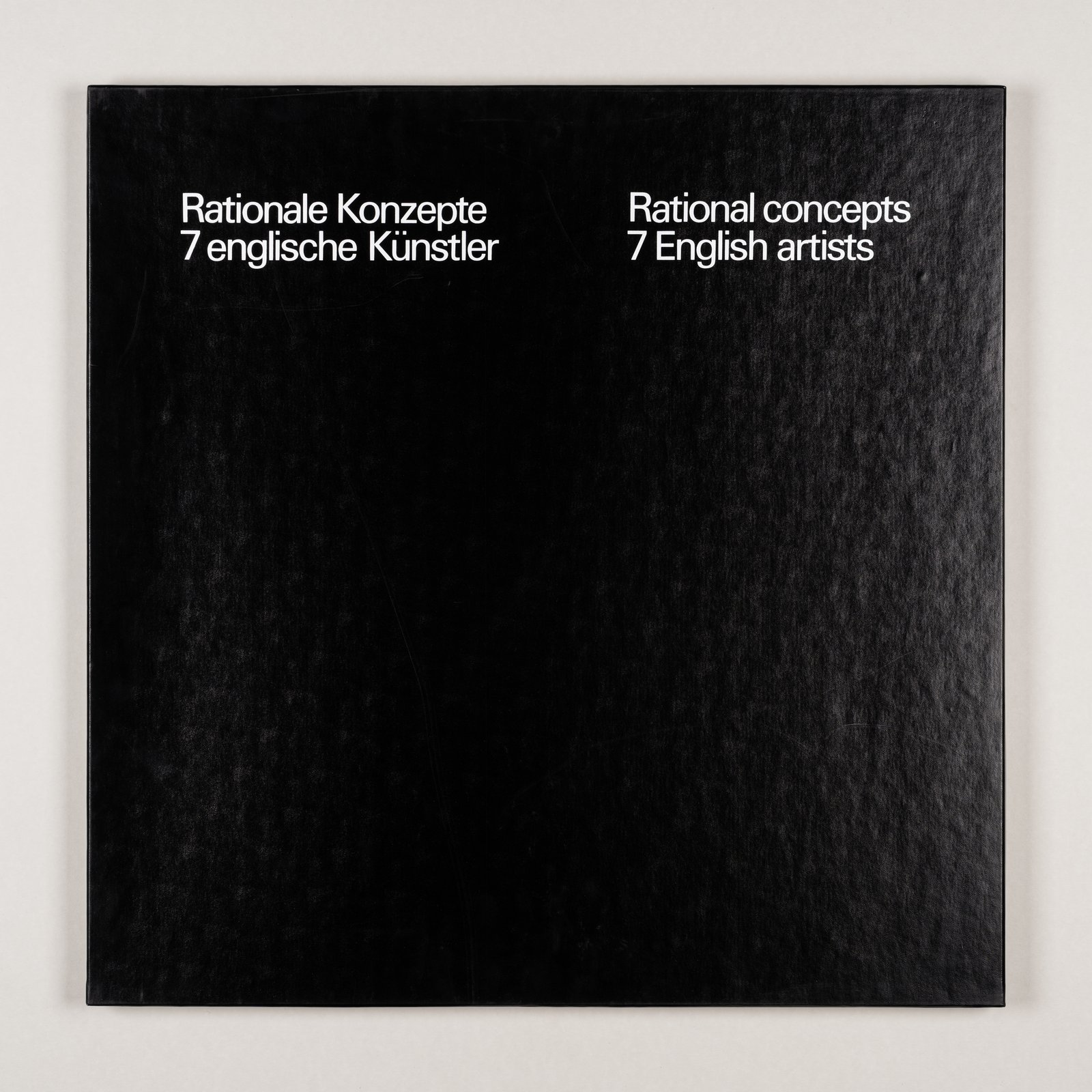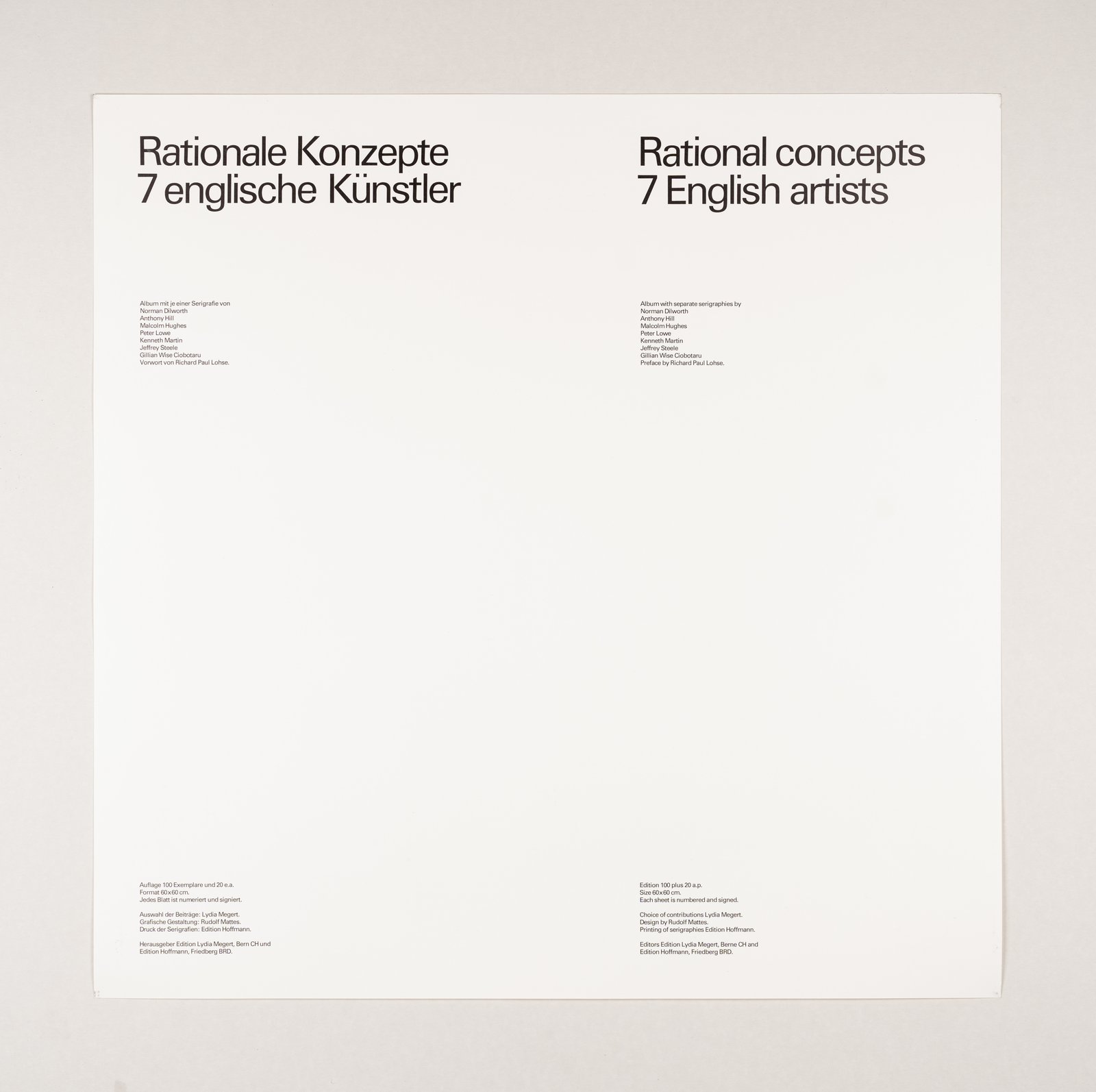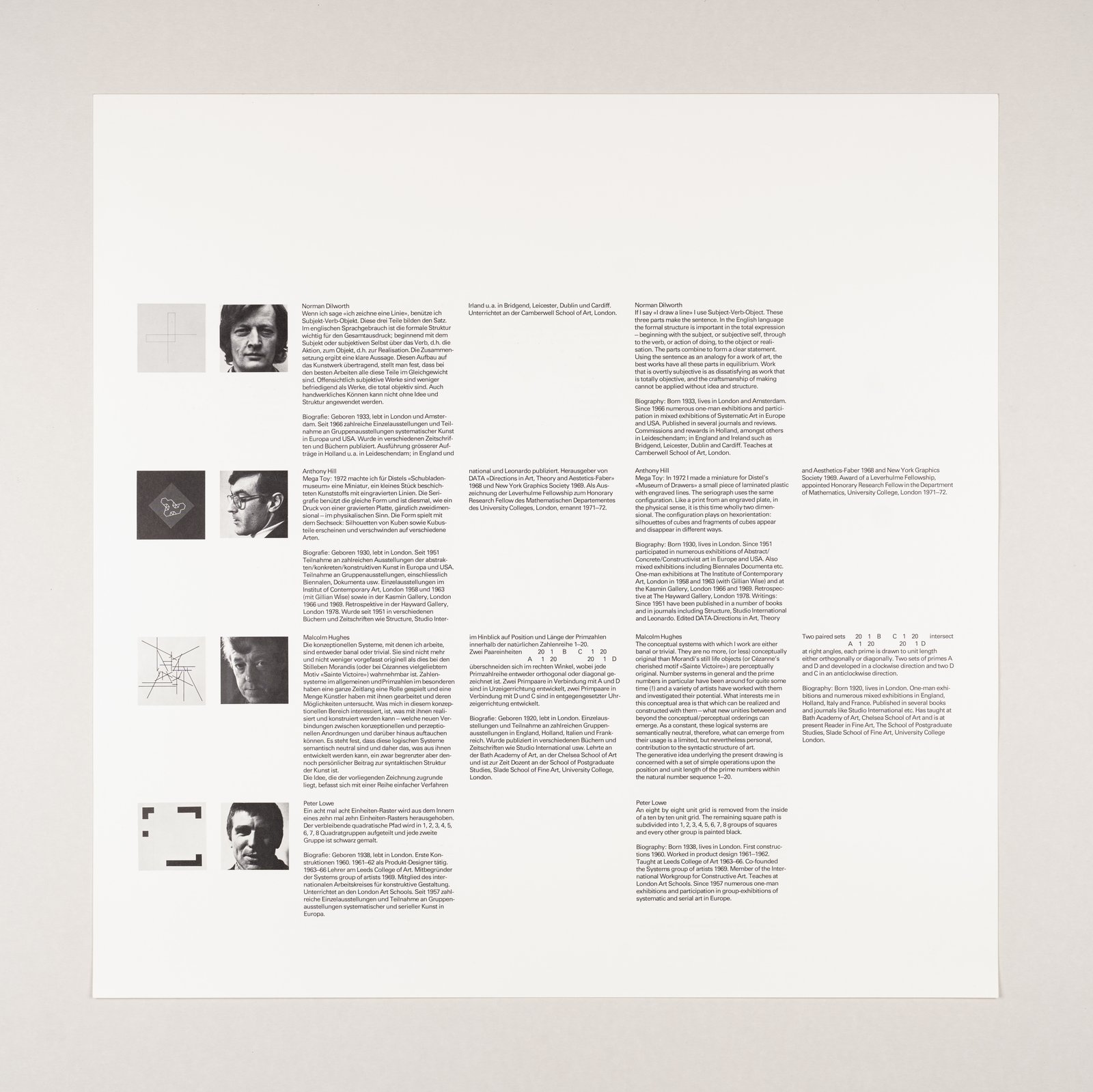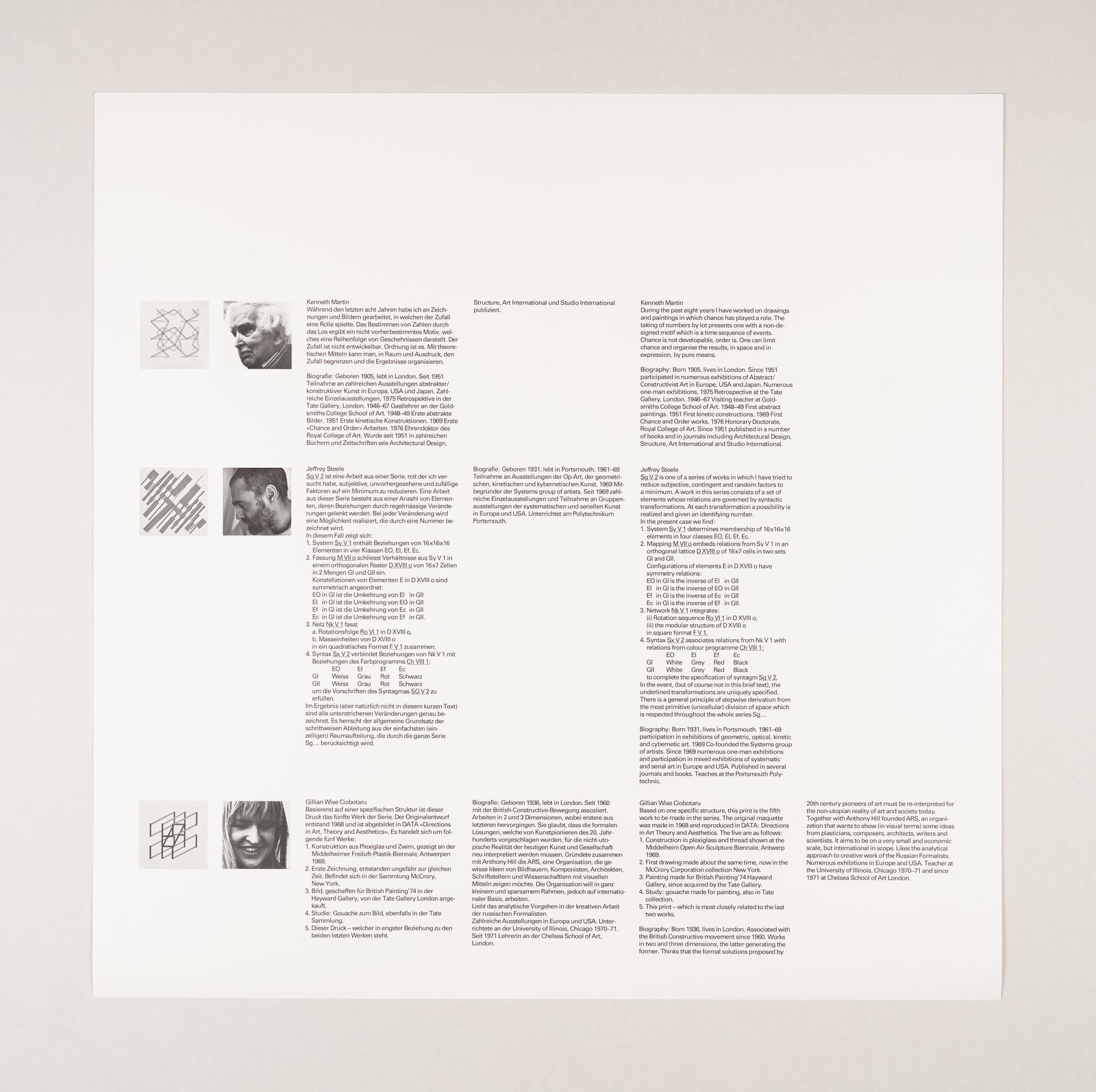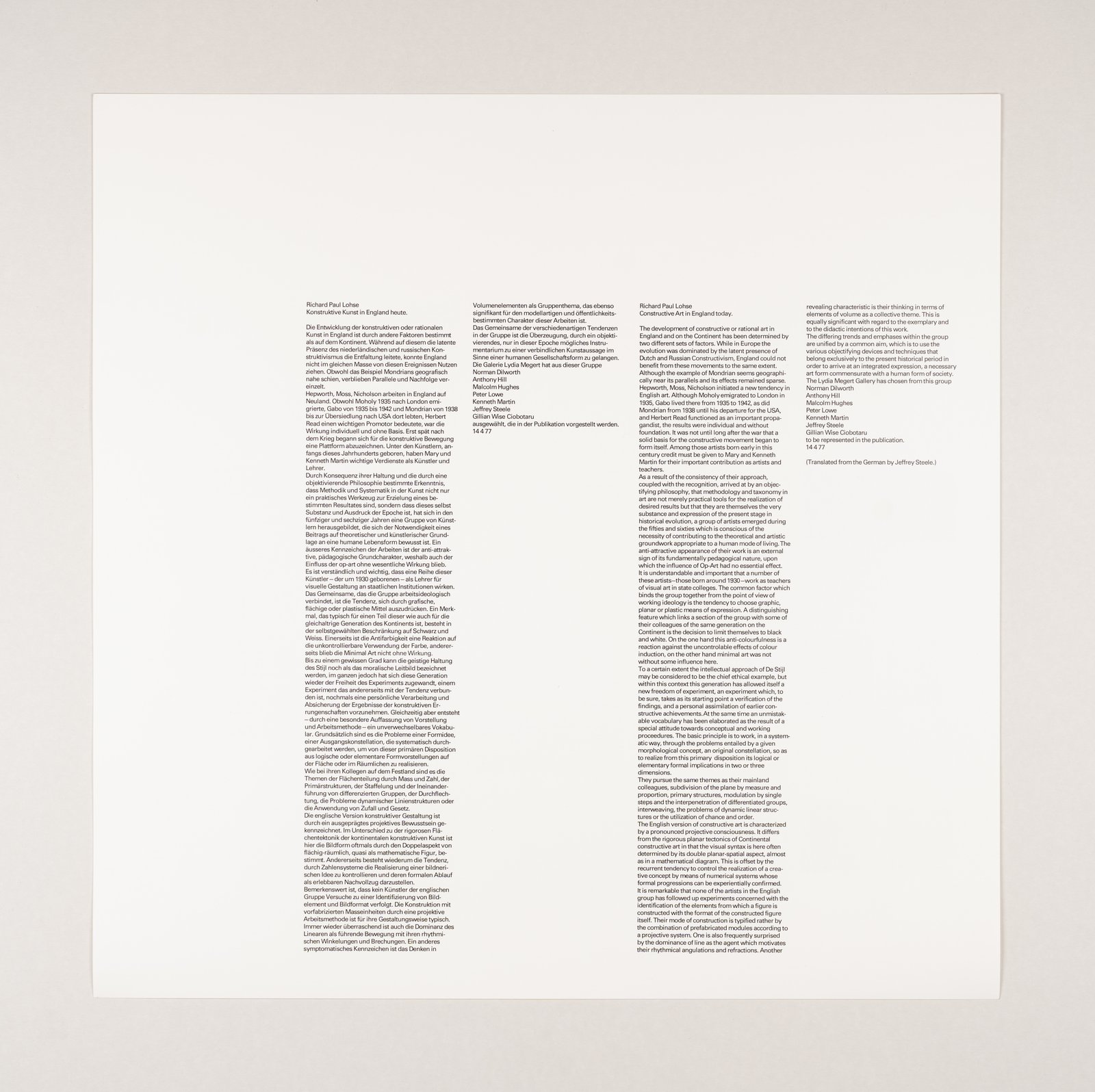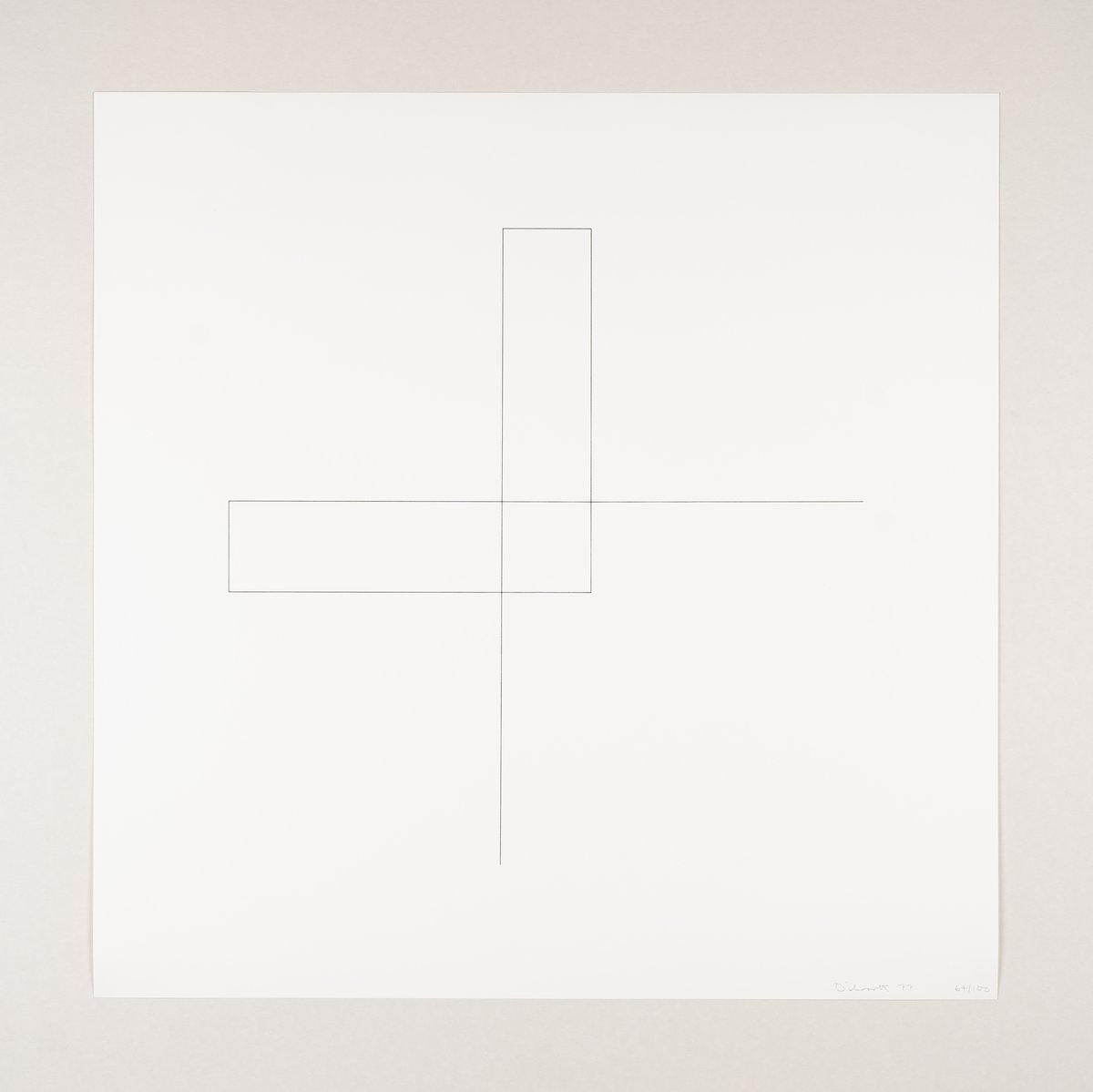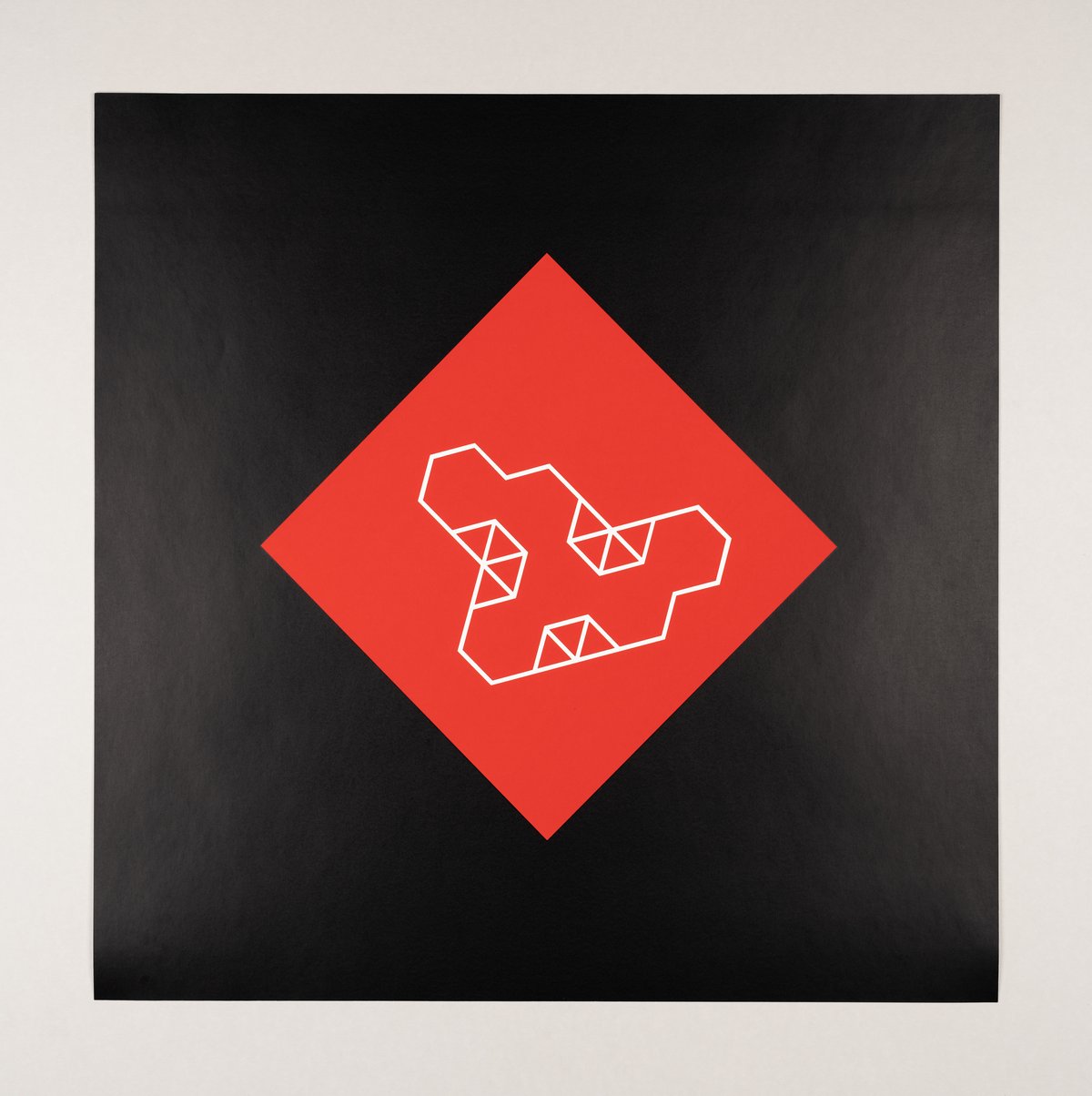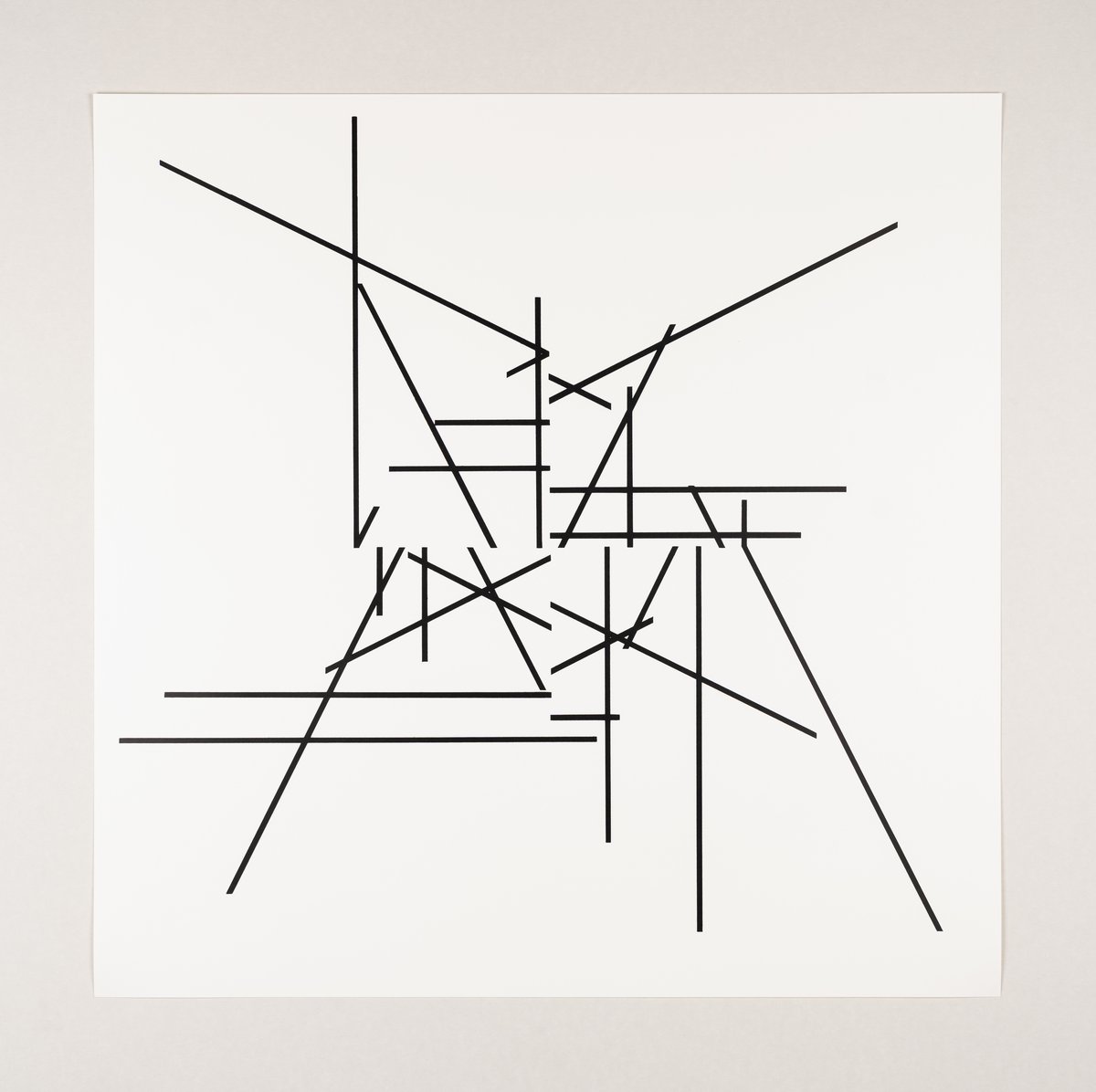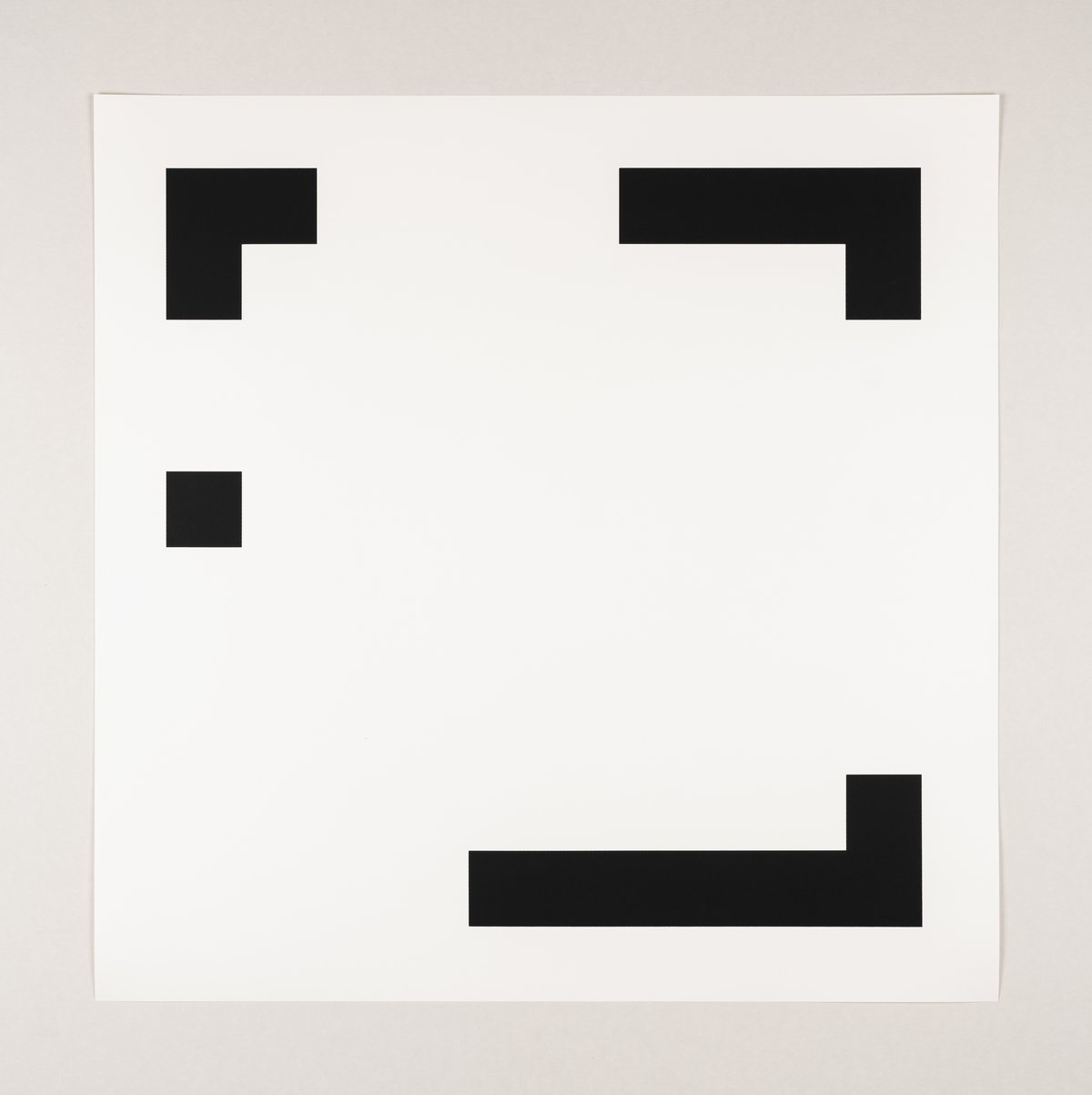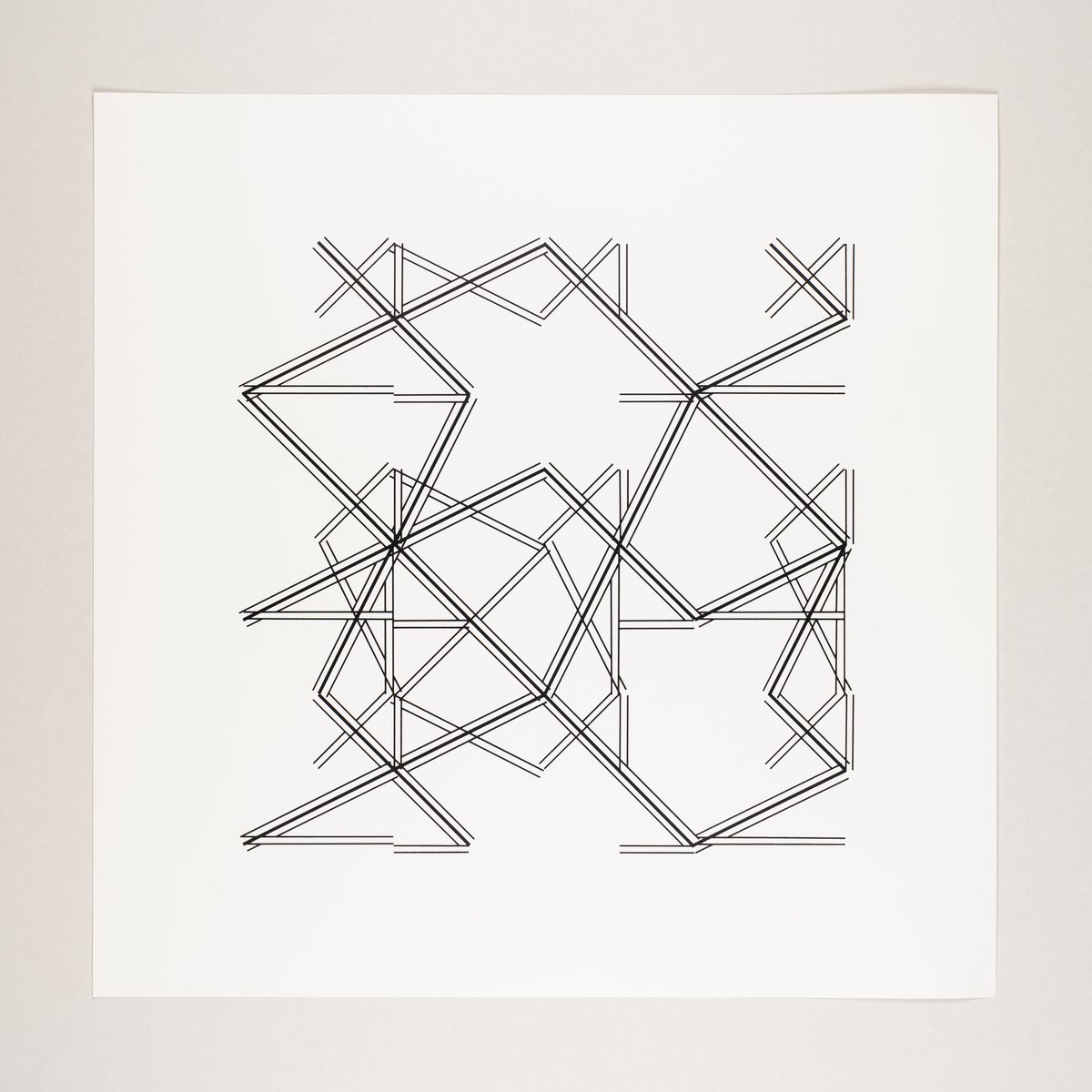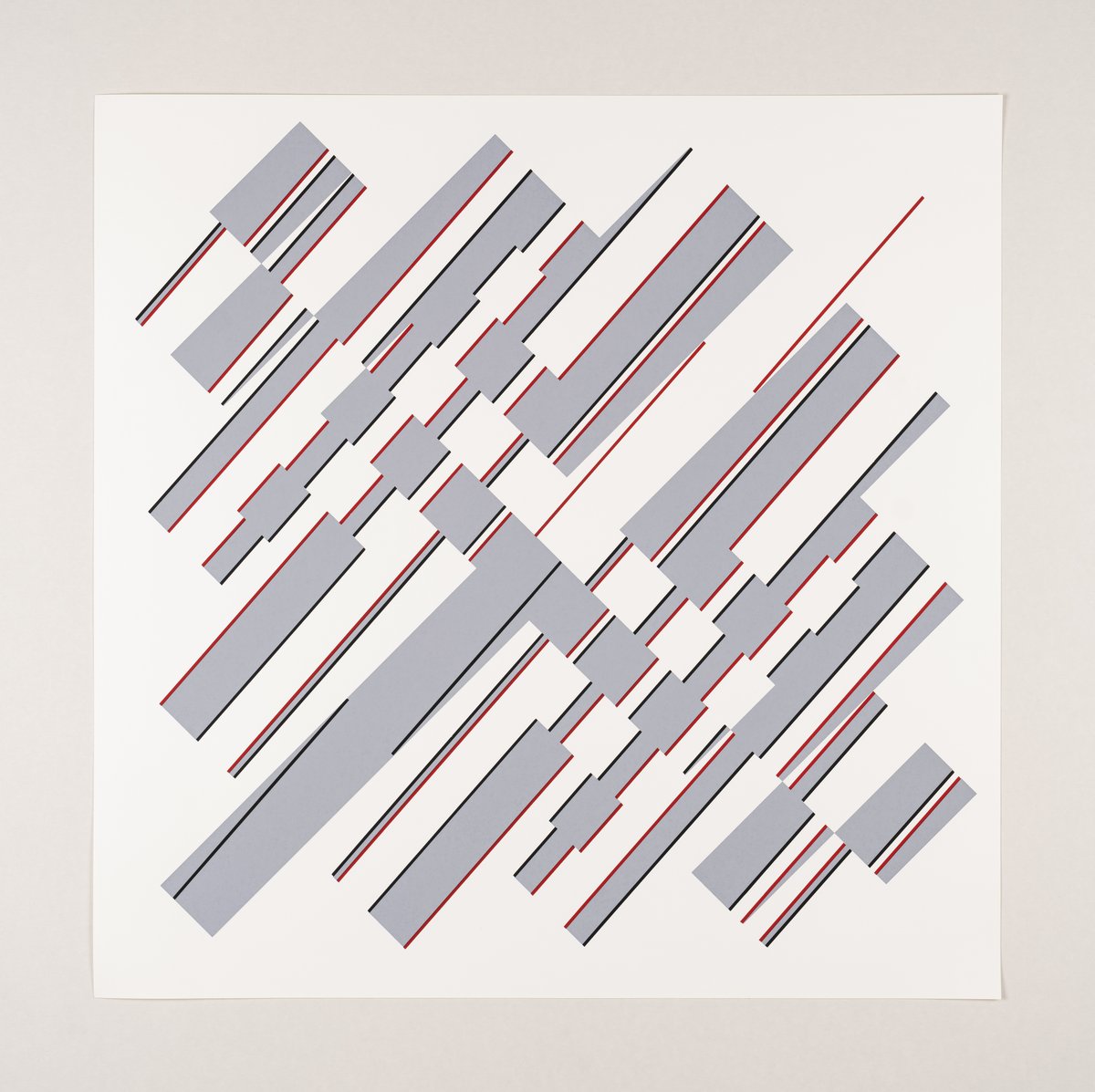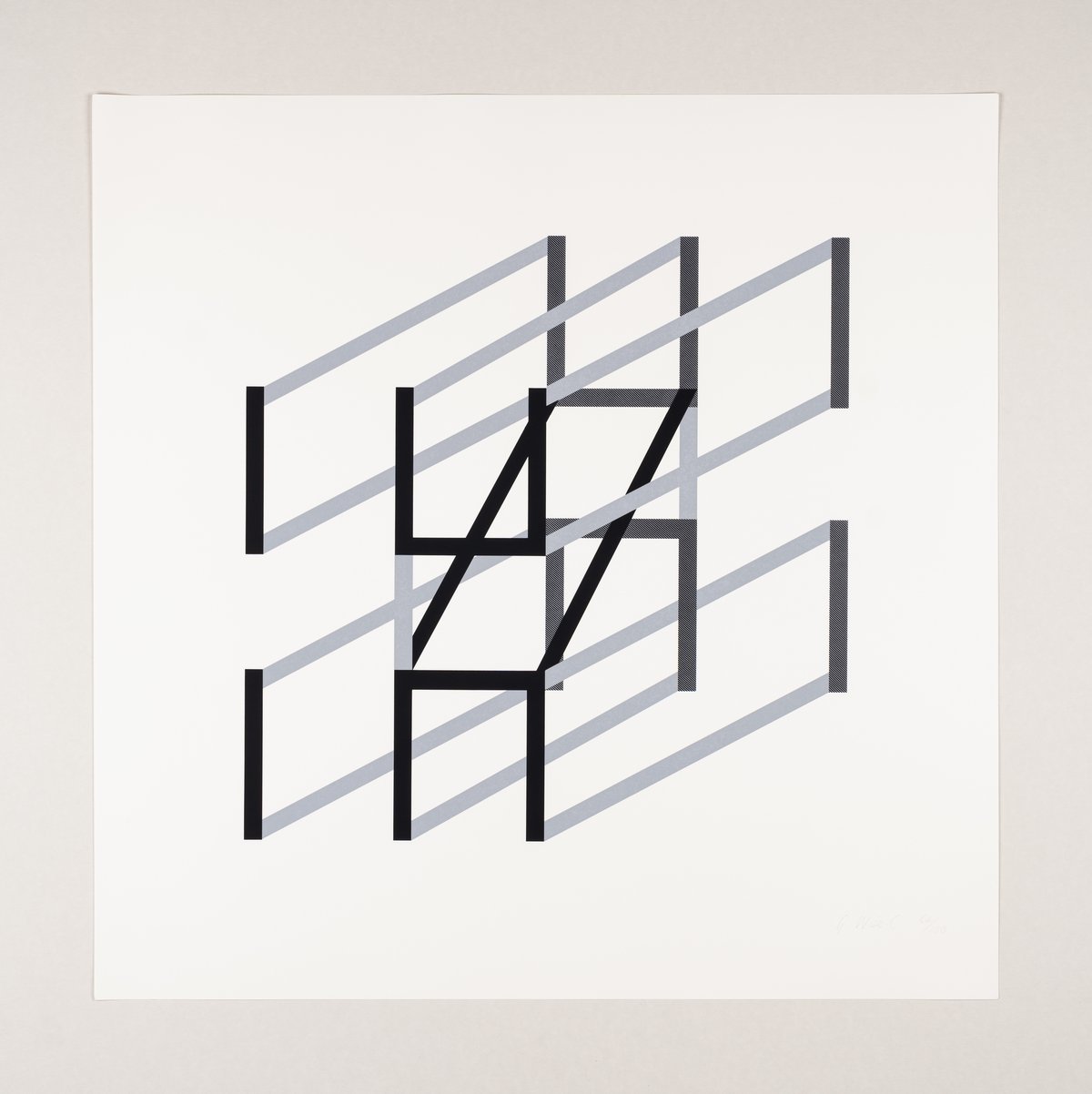rationale konzepte
norman dilworth, anthony hill, malcolm hughes, peter lowe, kenneth martin, jeffrey steele, gillian wise
1977
original-serigraphie auf papier
60 × 60 cm
edition hoffmann
auflage von 100 + 30 e.d’a.
signiert, datiert und nummeriert
7-teiliges mappenwerk
herausgeber:in: edition hoffmann, lydia megert
gestaltung: rudolf mattes
druck: edition hoffmann
7000 € inkl. MwSt.
the development of constructive or rational art in england and on the continent has been determined by two different sets of factors. while in europe the evolution was dominated by the latent presence of dutch and russian constructivism, england could not benefit from these movements to the same extent. although the example of mondrian seems geographically near its parallels and its effects remained sparse. hepworth, moss, nicholson initiated a new tendency in english art. although moholy emigrated to london in 1935, gabo lived there from 1935 to 1942, as did mondrian from 1938 until his departure for the usa, and herbert read functioned as an important propagandist, the results were individual and without foundation. it was not until long after the war that a solid basis for the constructive movement began to form itself.
the english version of constructive art is characterized by a pronounced projective consciousness. it differs from the rigorous planar tectonics of continental constructive art in that the visual syntax is here often determined by its double planar-spatial aspect, almost as in a mathematical diagram. this is offset by the recurrent tendency to control the realization of a creative concept by means of numerical systems whose formal progressions can be experientially confirmed. it is remarkable that none of the artists in the english group has followed up experiments concerned with the identification of the elements from which a figure is constructed with the format of the constructed figure itself. their mode of construction is typified rather by the combination of prefabricated modules according to a projective system. one is also frequently surprised by the dominance of line as the agent which motivates their rhythmical angulations and refractions. another revealing characteristic is their thinking in terms of elements of volume as a collective theme. this is equally significant with regard to the exemplary and to the didactic intentions of this work.
the differing trends and emphases within the group are unified by a common aim, which is to use the various objectifying devices and techniques that belong exclusively to the present historical period in order to arrive at an integrated expression, a necessary art form commensurate with a human form of society.
richard paul lohse, 1977
